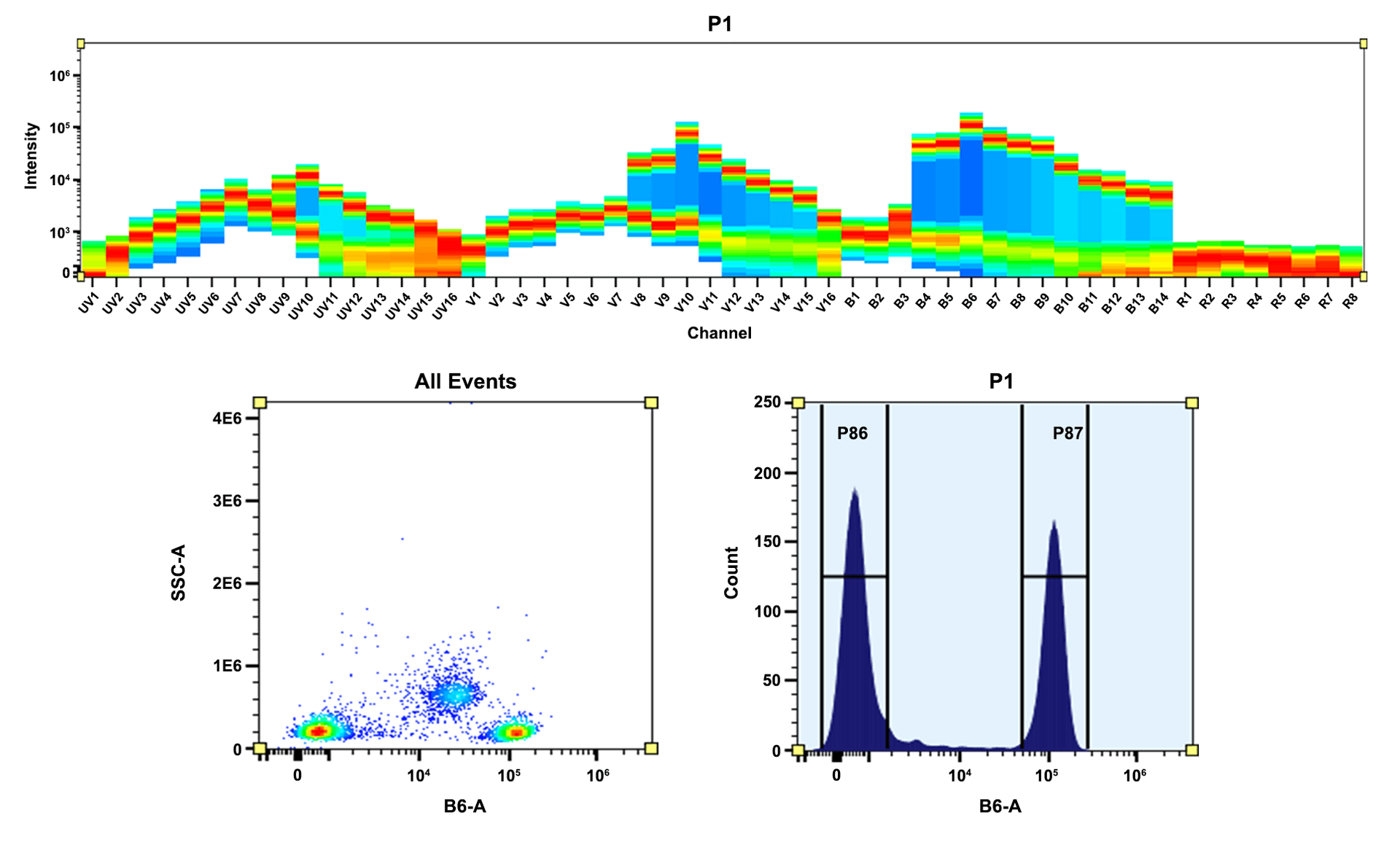Buccutite™ Rapid PE Antibody Labeling Kit
Production Scale Optimized for Labeling 1 mg Antibody Per Reaction
Buccutite™ Rapid PE Antibody Labeling Kits, designed for large-scale production, offer a convenient and efficient method to label antibodies with PE, APC, and iFluor® tandem dyes. In comparison to traditional protein-protein conjugation methods like the SMCC crosslinking technique, Buccutite™ conjugation is more robust and straightforward. Using a two-step mixing protocol, researchers can directly conjugate PE to any antibody or protein in less than 2 hours. Each Buccutite™ kit includes all the essential components for two labeling reactions and features a user-friendly, pre-packed spin column for maximum conjugate yield. Each Buccutite™ FOL-Activated PE vial provided in this kit is precisely formulated to label 1 mg of purified protein or antibody. Before labeling, it's important to remove stabilizing proteins like BSA from the sample and avoid using amine-rich buffers like Tris, which might disrupt the labeling process. Phycoerythrin (PE) is an intensely bright, red-orange fluorescent phycobiliprotein with an excitation and emission maxima of ~565 nm and ~576 nm, respectively. Given its intense brightness, PE is recommended for pairing with low-abundance targets to minimize spillover and compensation. PE conjugates are well-suited for flow cytometry, spectral flow cytometry, and other immunoassays requiring high sensitivity but not photostability. With Buccuitte™ Rapid Antibody Labeling kits, researchers can directly label primary antibodies, eliminating the need for secondary antibodies and enhancing panel-building flexibility.


| Catalog | Size | Price | Quantity |
|---|---|---|---|
| 5405 | 2 Labelings | Price |
Physical properties
| Solvent | DMSO |
Spectral properties
| Correction factor (280 nm) | 0.175 |
| Extinction coefficient (cm -1 M -1) | 1960000 |
| Excitation (nm) | 565 |
| Emission (nm) | 574 |
| Quantum yield | 0.82 |
Storage, safety and handling
| H-phrase | H303, H313, H333 |
| Hazard symbol | XN |
| Intended use | Research Use Only (RUO) |
| R-phrase | R20, R21, R22 |
| Storage | Refrigerated (2-8 °C); Minimize light exposure |
| UNSPSC | 12171501 |
Contact us
| Telephone | |
| Fax | |
| sales@aatbio.com | |
| International | See distributors |
| Bulk request | Inquire |
| Custom size | Inquire |
| Technical Support | Contact us |
| Request quotation | Request |
| Purchase order | Send to sales@aatbio.com |
| Shipping | Standard overnight for United States, inquire for international |
Page updated on January 19, 2026

